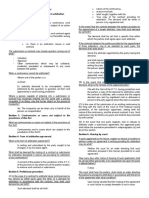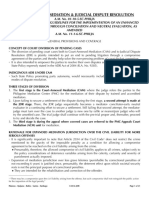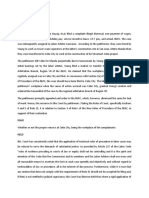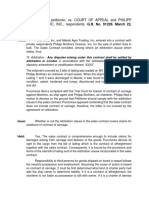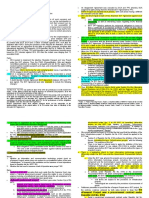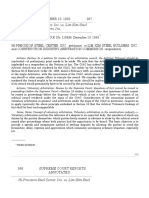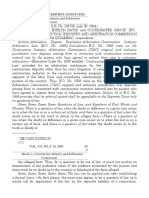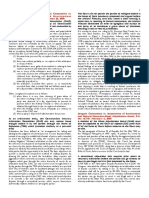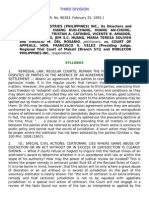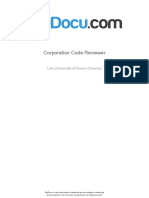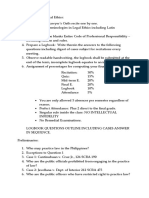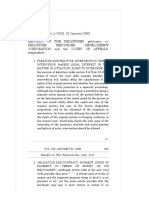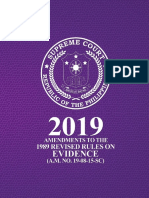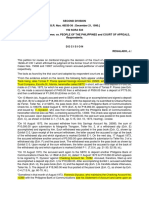0% found this document useful (0 votes)
370 views2 pagesHi-Precision Steel Center, Inc., vs. Lim Kim Steel Builders, Inc., and Construction Industry Arbitration Commission G.R. No. 110434 December 13, 1993
The Supreme Court upheld the arbitral award and ruled that it could not be reviewed except on questions of law. The arbitral award is binding and final on questions of fact. The objectives of voluntary arbitration are to provide a speedy and inexpensive resolution of disputes outside of formal court litigation. Allowing full factual review would undermine these objectives. The Court will not permit parties to relitigate factual issues already decided by the arbitral tribunal unless there is a clear showing of egregious error amounting to grave abuse of discretion and loss of jurisdiction.
Uploaded by
Di CanCopyright
© © All Rights Reserved
We take content rights seriously. If you suspect this is your content, claim it here.
Available Formats
Download as DOCX, PDF, TXT or read online on Scribd
0% found this document useful (0 votes)
370 views2 pagesHi-Precision Steel Center, Inc., vs. Lim Kim Steel Builders, Inc., and Construction Industry Arbitration Commission G.R. No. 110434 December 13, 1993
The Supreme Court upheld the arbitral award and ruled that it could not be reviewed except on questions of law. The arbitral award is binding and final on questions of fact. The objectives of voluntary arbitration are to provide a speedy and inexpensive resolution of disputes outside of formal court litigation. Allowing full factual review would undermine these objectives. The Court will not permit parties to relitigate factual issues already decided by the arbitral tribunal unless there is a clear showing of egregious error amounting to grave abuse of discretion and loss of jurisdiction.
Uploaded by
Di CanCopyright
© © All Rights Reserved
We take content rights seriously. If you suspect this is your content, claim it here.
Available Formats
Download as DOCX, PDF, TXT or read online on Scribd
/ 2


